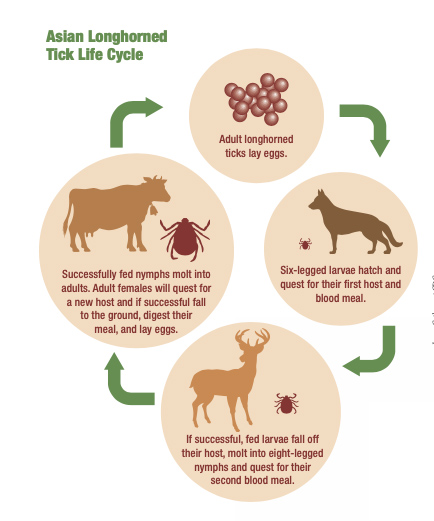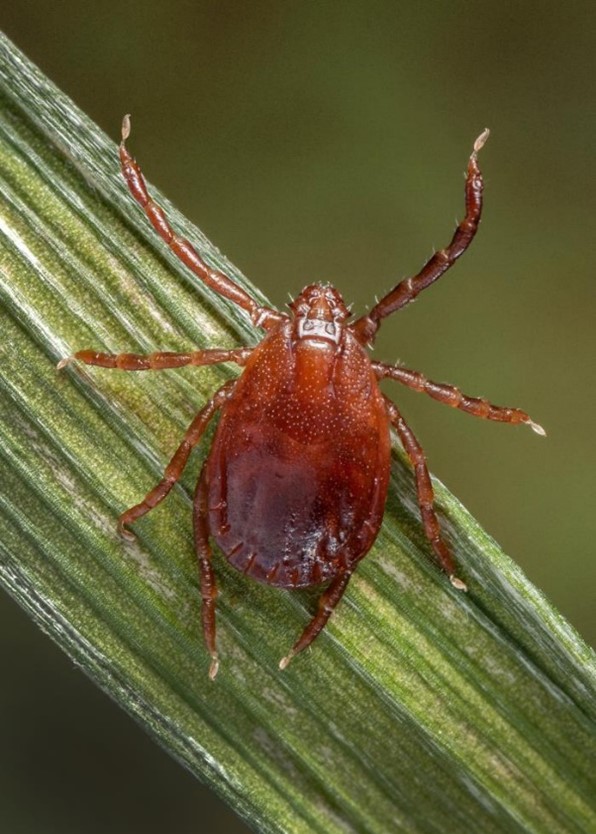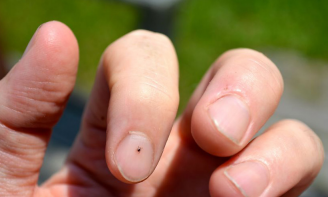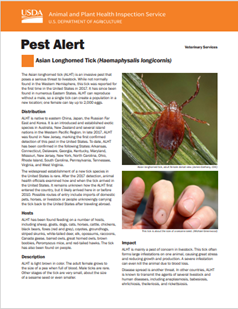Common name: Asian longhorned tick
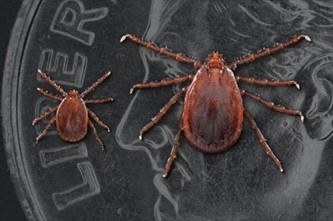
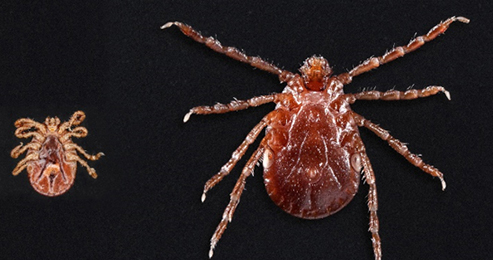
Left: Nymphal and adult female Asian longhorned tick on dime, top view. Right: Nymph and adult female, underside. Photos: CDC/DVBD
- Geographic Distribution
Asian longhorned ticks (ALHTs) are not native to the United States but have been present as an invasive species since at least 2017. The first detection of ALHTs in Indiana occurred in April 2023. Indiana is the 19th state to have detected ALHTs.
Visit the U.S. Department of Agriculture’s Asian longhorned tick page for the most current map.
Current distribution in Indiana
Medical entomologists at the Indiana Department of Health conduct active surveillance for Asian longhorned ticks and other ticks that are important to human and animal health.
To see where ALHTs have been detected, visit the Indiana Tick-borne Disease Surveillance dashboard and select "Ticks not yet associated with human diseases" from the disease dropdown menu.
- Life Cycle
- Commonly Associated Diseases
- Prevention
- Images
Page last reviewed/updated: February 2025

